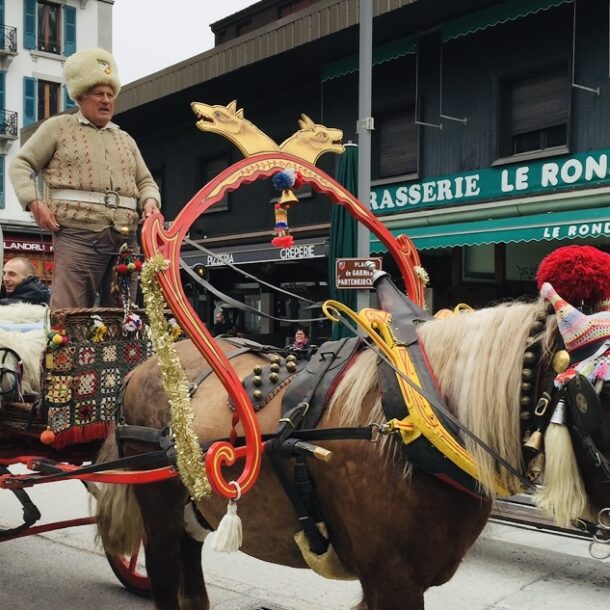
Where the Two Niles Meet
Gracing the west bank of the Nile is Omdurman, Khartoum’s largest city. Founded in 1884, Omdurman rose after the Mahdist war. Conquered by both the British and Egyptians, Sudan has had its fair share of atrocities. However, that didn’t last long; British forces were defeated when General Gordon was speared and beheaded, and Sudan was finally liberated. That, in short, is the liberating moment in the colonial history of Sudan, one of Africa’s most unique lands.
To learn more about Sudan, one cannot just look at its history. The metropolitan city of Khartoum, once a fishing village mostly overlooked until the Ottoman Turks arrived, is the country’s capital and economic heart. Khartoum has come a long way since its humble beginnings and is now a bustling capital growing by the day.
Khartoum Redefined
Khartoum is ethnically and culturally diverse, with several ethnic minorities of Greek, Egyptian and Turkish communities living in the capital. Because of the country’s economic and political situation, many have immigrated. Despite the mass migration, these diverse ethnic groups have played an important role in Sudan’s political, cultural, and economic life.
Khartoum is often overlooked as a tourist destination; nevertheless, the city has some impressive credentials worth exploring. Of paramount interest to any first-time visitor is a stop by Omdurman, the point where the two Niles meet; this has long fascinated tourists and locals alike.
A boat trip to the confluence of the majestic Blue and White Niles is a remarkable experience, to say the least. The Blue Nile begins at Lake Tana in Ethiopia and flows into Sudan; the White Nile, on the other hand, is longer and runs across central Africa.
Tutti island is the prime spot for a boat trip to see the point where the two Niles meet; several boats and ferries can be hired next to Tutti Bridge. While you are here, grab a drink or hot tea prepared by Sudanese women and get ready to jump in and jet off. Three towns surround Tutti island; Khartoum, Omdurman, and Khartoum North, also known as Bahri.
Tutti is home to numerous mud shacks and villages; fishermen and farmers are the island’s primary residents. Considered the agricultural center of Khartoum, Tutti is the primary supply source for Khartoum’s fruits and vegetables. The scattered farms on the island are lush green, and local farmers still use manual farming methods across the acres of green fields along the abundantly scattered lime groves.
Being a cosmopolitan city, Khartoum is home to several tribes, some of which come from the Nuba Mountains and South Kordofan. A traditional tribal wrestling match is an exciting experience to watch. Each Saturday and Wednesday, a wrestling match is held in Haj Yusuf, a small town on the outskirts of Khartoum. The fighters split into two groups as they wrestle; the competition is fierce; when a winner is declared, he is selected to face the next competitor in the next round of fighting. Crowds gather to watch the match as they enjoy the accompanying banter and musical performances in the background of the small arena.
A stop by Nile Street is a remarkable experience to complement your visit. Considered among the most popular spots in Khartoum, Sudan’s teens gather on Nile street’s pedestrian sidewalk and the Nile’s bulwark to enjoy some of the tranquil scenes along the Nile. The most unique place on Nile Street is Al Mugran, another exciting spot to see the two Niles meet; one can easily see the difference in the colours of the water upon a close inspection.
Taking a cruise on the Nile is a worthwhile experience; several boats and ferries dock nearby. It can get quite hot during the day, especially throughout the summer months; visiting the Nile in the evening is advisable and can be quite an enjoyable experience. After the cruise, stop by the plentiful restaurants and cafes for a bite or try sampling traditional Arabic coffee or Sudanese mint tea. Nile Street is close to other popular historical sites such as the old Presidential Palace and Khartoum University.
Khartoum’s old Presidential Palace was the formal and official house of the head of state; built in 1832 on the banks of the Blue Nile, it was the official seat of the Sudanese government in the decades following the country’s independence. While you are here, explore the remarkable colonial buildings, extensive gardens, and impressive array of old vehicles used by Sudan’s presidents under British colonial rule. Taking photos of the palace is prohibited unless the Palace guards grant you permission.
A new Presidential Palace has recently replaced the Old Presidential Palace. Former President Omar Al Bashir has shifted his administration to a new palace, and Chinese officials constructed it. It is noteworthy to mention that China has had a considerable influence in building several flagship projects in Khartoum; these include the construction of the renowned Friendship Hall, among other projects in the country.
Omdurman Ventures
Omdurman is home to the Omdurman Souq or market, one of the largest open markets in town. When visiting Omdurman, set aside some time to explore its local market and explore a few local goods, including traditional gold, jewellery, and locally manufactured and produced crocodile and reptile leather goods.
After exploring the local market, set your sights on the Khalifa house, a short commute from the Omdurman Souq. The museum has a rich treasure trove of artifacts dating back to the nineteenth century. Among the other notable features displayed are a wide range of banknotes, rifles, swords, photographs taken during the British Colonial rule, and other ancient Mahdist paraphernalia. The two-storied building of the Khalifa house includes large courtyards complemented by the museum’s traditional mud and brick structure, showcasing Sudan’s unique historical legacy.
Where to Stay
Khartoum has no shortage of hotels; there are lots to explore, from small nondescript hotels to large hotels with state-of-the-art amenities. Built in 1880, Grand Holiday Villa is Khartoum’s historical building exuding the old charm of the colonial era. Located in the heart of the capital, the hotel boasts 160 guest rooms, office suites, shopping arcades, and a recreational club. In its heyday, the hotel’s guests included Thomas Cook, Winston Churchill, Queen Victoria, and a host of other dignitaries.
The Corinthia hotel is another stunning addition to Khartoum’s growing list of hotels. The five-star hotel is Khartoum’s trendiest; it is located in the heart of the business district and has 173 rooms with 57 suites over 18 guest floors. Amenities include a fitness center, spa replete with a Turkish Hamman, gym, sauna, indoor pool, squash, and tennis courts. Guests at the Corinthia have panoramic views of the Nile and city from the Mugran restaurant. The hotel has four restaurants, each serving distinct cuisines from all corners of the globe. The most popular is the Asian restaurant dishing up tempting dinners from Thailand, Japan, and China.
Before heading out to the city, kick off your day with a caffeine jolt at the Nile River Café, serving traditional Sudanese coffee with fried beans instead of roasted ones making the brew thick and robust. Other hot drink specialties include mint tea and coffee with a dash of cinnamon, cardamom, and lots of sugar.
Minutes away from Khartoum Airport is the Al Salam hotel, surrounded by the Afra mall and the international park. The hotel’s luxurious amenities include elegantly designed rooms and suites, conference rooms and lush landscaped gardens, a fitness center, an outdoor pool, and a spa.
Travelling to Khartoum
Khartoum isn’t your run-of-the-mill destination; Sudan was a popular destination for tourists in the past. Currently, given the economic and political situation traveling to Sudan is often overlooked.
If you plan to visit Khartoum, you need a tourist visa; if your country does not have a Sudanese embassy, you can get a visa on arrival. Most tour operators can facilitate that. Once you arrive in Sudan, you need to register your passport at a local Sudanese government office within three days.
Of course, before traveling to Sudan, you might wonder if it is safe. Sudan isn’t Darfur; even though sporadic conflicts are erupting in Darfur every now and then, Khartoum is safe. With the current political situation, regular protests erupt in Khartoum. The best time to visit Khartoum is in December, when the temperatures are milder and the risk of malaria is low. Winter daytime temperatures range from 30-35 Celsius, with cooler nights dropping to 20 degrees Celsius. The summer’s scorching heat is avoidable from June to September; temperatures can soar to 45 degrees Celsius.
It is possible to travel to Khartoum independently, but exploring the hard-to-reach areas is more challenging. Choosing a tour operator is a feasible option. They arrange everything from accommodation to sightseeing and tour options hassle-free. How long you stay in Khartoum is a question that you will need to decide on, most tour operators advise spending at least a week exploring the historical sites and desert. If you plan to visit Port Sudan, you need to arrange that with your tour operator in advance.
Getting around Khartoum isn’t easy. Years ago, traffic was almost non-existent; today, Khartoum is bustling, and traffic is hectic. Be prepared to spend some time navigating the streets. You can catch a local rick-shaw commonly called a tuk-tuk. There are several taxis with dial-in options. Khartoum International airport is the gateway to Sudan; years ago, several airlines flew in currently the opportunities to fly to Khartoum are limited. Emirates, Etihad, Egypt Air, Kenya Airways, Turkish and Ethiopian are among the few remaining airlines.
Khartoum is hardly your typical tourist destination. Nevertheless, behind the unsavoury images, and news bulletins is a land of contrasts steeped in ancient historical attractions and cultural experiences and hideouts well versed in the art of hospitality!



